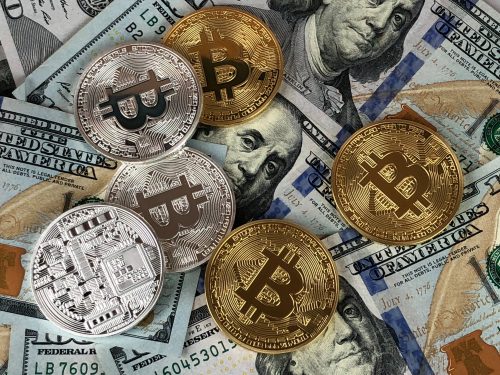
There has been a ton of speculation on how to market Bitcoin, and we set out here to investigate what the price of the blockchain could look like in the case that more mainstream acceptance is achieved.
Currency should be utilized whether it is a store of money or, stated differently, whether it could be consistently relied on overtime and without depreciating to retain its relative worth. Throughout history, goods or precious metals have been utilized as payment instruments in many cultures since they have been shown to have a reasonably safe value. However, instead of forcing people to cart bulky volumes of cocoa beans, gold, or other early types of money, as an option, cultures gradually switched to minted currency. Nevertheless, the explanation that so many minted coins were functional was that they were enduring value stores constructed of metals. Also, start trading with the-wealthmatrix.com.
Minted currency frequently takes the shape of paper money in the current era and may not carry the same underlying worth as coins produced from precious metals. However, or far more probable, people use electronic currencies and means of payment. Any currency forms depend on the idea that they are “representative,” implying that it is possible to directly trade each coin or note for a defined quantity of a product. However, to curb fears of overruns on federal gold reserves, several world currencies are still known as fiat as countries have abandoned the gold standard. The Fiat currency is provided by a nation and not funded by any asset, but rather by the expectation that individuals and governments would recognize money. The significant global currencies today are fiat currencies. Many governments and economies have considered the fiat currency to be the most stable and least prone to be vulnerable over time to depreciation or loss of value.
In addition to the issue of whether an acceptable currency is a store of value, requirements relating to scarcity, divisibility, usefulness, transportability, resilience, and counterfeit ability must also be met. Let’s have a peek one at a time at these values.
1) Scarcity:
The secret to the preservation of the stability of a currency is its distribution. A supply of too high money could trigger consumer prices to rise, culminating in an economic collapse. A collection of money that is too limited will create financial difficulties as well. Monetarism is the macroeconomic ideology that attempts to resolve the role of capital availability in an economy’s health and development (or lack thereof).
In fiat currencies, as a way of regulating scarcity, most governments worldwide prefer to print money. Many regimes are working with a fixed inflation rate that reduces the value of the fiat currency. For example, in the U.S., this rate has traditionally hovered about 2 percent. 4 This is distinct from bitcoin, which has a variable issuance rate that varies with time. 5
2) Divisibility:
Successful currencies may be separated into smaller units with incremental value. To act as a means of trade for all sorts of products and discounts within an economy, a single currency structure must provide stability associated with this divisibility. To correctly represent the worth of a product or service accessible throughout the economy, the currency must be sufficiently divisible.
3) Utility Program:
To be efficient, a currency has to have usefulness. Individuals need to be able to exchange currency units for products and services reliably. This is the critical explanation why currencies evolved in the first place: market players might stop needing to barter for products directly. The utility often includes the simple transfer of coins from one place to another.
4) Transportability:
To be efficient, currencies need to be readily exchanged between members of an economy. In terms of fiat money, this implies that currency units must be transferable by trade inside the economy of a given country and nations.
5) Longevity:
A currency must be at least relatively robust for it to be efficient. There are inadequate coins or notes made of materials that can easily be mutilated, weakened, or lost, or that decay with time to the extent of becoming unusable.
6) Counterfeit Ability:
Just as a currency needs to be robust to stay effective, counterfeiting must also be problematic. If not, by overwhelming it with bogus bills, malicious parties might effectively undermine the currency mechanism, thus adversely impacting the currency’s valuation. We would equate it to fiat currencies in any of the categories mentioned above to determine Bitcoin’s worth as a currency.
Interesting Related Article: “Everything You Need to Know About Bitcoins If You Are a Beginner“

